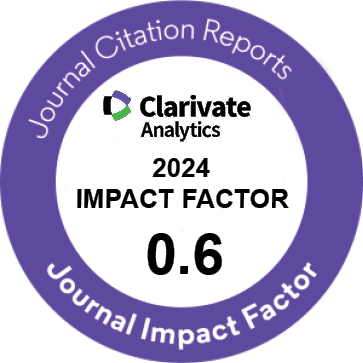| Original Article | |
| Etiology and Risk Factors Associated With Infertility | |
| Azam Moridi1, Nasibeh Roozbeh1, Halimeh Yaghoobi2, Shirin Soltani1, Sareh Dashti3, Nasim Shahrahmani4, Mojdeh Banaei5 | |
| 1Mother and Child Welfare Research Center, Hormozgan University of Medical Science, Bandar Abbas, Iran 2Social Determinants of Health Promotion Research Center, Hormozgan University of Medical Science, Bandar Abbas, Iran 3Department of Community Health, Faculty of Medicine and Health Sciences, Universiti Putra Malaysia, Serdang, Selangor, Malaysia 4Department of Midwifery¸ School of Nursing and Midwifery, Kerman University of Medical Science, Kerman, Iran 5Student Research Committee, School of Nursing and Midwifery, Shahid Beheshti University of Medical Sciences, Tehran, Iran |
|
|
IJWHR 2019; 7: 346?353 DOI: 10.15296/ijwhr.2019.57 Viewed : 8309 times Downloaded : 10018 times. Keywords : Infertility, Male, Infertility, Female, Etiology, Risk factor, Iran |
|
| Full Text(PDF) | Related Articles | |
| Abstract | |
Objectives: Infertility is one of the important complications in gynecology and the aim of the present study was to investigate the etiology and risk factors associated with infertility in the southern region of Iran. Materials and Methods: This cross-sectional study was conducted in infertility centers of Hormozgan University of Medical Science (HUMS). Totally, 250 infertile couples were included. The variables including socio-demographic characteristics, smoking, body mass index (BMI), and infertility status (e.g., type of fertility, duration, etc.) were assessed by a self-administered and validated questionnaire. Data analysis was carried out using SPSS version 22.0. Results: The most common causes of male and female infertility were varicocele (49.4%) and ovulation disorders (57.5%), respectively. There was a significant association between female factor infertility and level of education, age of women, women?s age at marriage, number of abortions, alcohol consumption, presence of an underlying disease, and BMI (P < 0.005). There was also a significant relationship between male factor infertility and men?s job, addiction, smoking, and presence of an underlying disease (P < 0.005). Conclusions: Considering various risk factors for infertility, an important step forward can be taken towards reducing the incidence of these risk factors by providing different education classes during pre-marriage, pre-partum, pregnancy and postpartum periods so as to inform couples of controllable risk factors. |
Cite By, Google Scholar
Google Scholar
PubMed
Online Submission System
 IJWHR ENDNOTE ® Style
IJWHR ENDNOTE ® Style
 Tutorials
Tutorials
 Publication Charge
Women's Reproductive Health Research Center
About Journal
Publication Charge
Women's Reproductive Health Research Center
About Journal
Aras Part Medical International Press Editor-in-Chief
Arash Khaki
Mertihan Kurdoglu Deputy Editor
Zafer Akan























